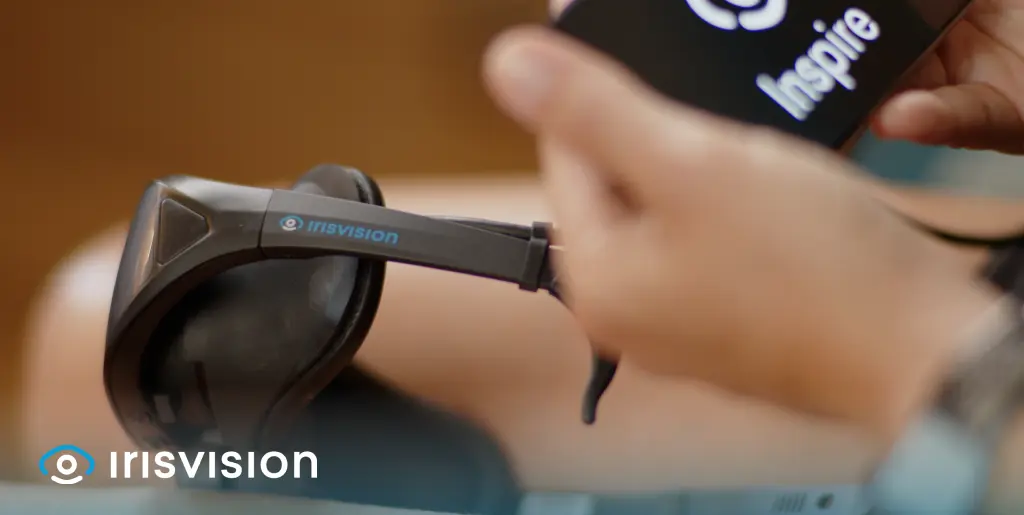
#LIVE2.0 #Review
If you’re here right now, it means you are armed with the information required to understand what optic atrophy is. But just to ensure it stays fresh in your mind, let’s take a quick look at optic atrophy.
Atrophy literally means to waste away or deteriorate, and optic atrophy is an eye condition that affects the optic nerve. It’s not categorized as a disease, but a sign of a potentially serious condition where the optic nerve is damaged by different kinds of pathologies. It can lead to problems with vision, including blindness.
The optic nerves in our eyes are a combination of nerve fibers that transmit impulses to the brain. In optic atrophy, something interferes with these transmissions. Various factors of interference include:
To identify whether optic atrophy has happened to you or someone around you, there is a shift in vision, specifically:
If any symptoms of optic atrophy occur, an ophthalmologist would examine the eyes with an instrument called an ophthalmoscope. With this, the optic disc is viewed at the back of the eye where the optic nerves enter. In the case of optic atrophy, the optic disc is pale in color due to the change in the flow of the blood vessels.
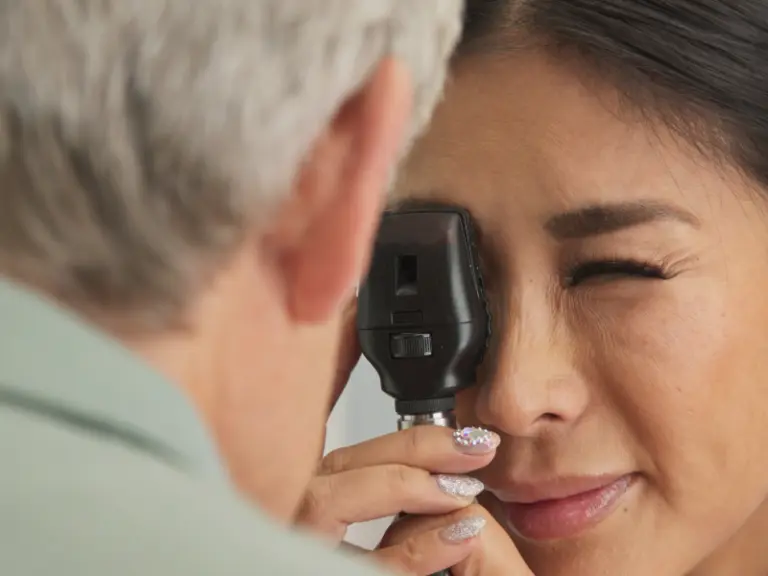
To further determine the diagnosis, other tests are performed to measure the vision, as well as peripheral and color vision. In the case of a suspected tumor or multiple sclerosis, magnetic resonance imaging (MRI) is performed.
We all want a tested and proven treatment for any health condition. Yet, not having a cure doesn’t mean it cannot be managed. Though, sadly, optic atrophy treatment or cure isn’t available, it can be managed by regular eye exams, especially if there’s a history of eye diseases in the family.
The damage caused by optic atrophy is irreversible. Any form of treatment used for optic atrophy is to halt the progress of damage to the optic nerve and preserve the leftover vision.
As optic atrophy is caused by various diseases, finding the underlying disease is the key to treatment to halt the progress.
Let’s get into how different diseases can be treated to stop or slow down the progress of optic nerve damage.
As a leading cause of blindness in the USA, it cannot be reversed. Yet, catching the disease at its early stages helps slow or prevent vision loss. It can be treated by lowering the eye pressure. Based on the situation, prescription eye drops, oral medication, laser treatment, surgery, or a combination of these may be suggested.
Other ways to control high eye pressure or promote eye health are to:
Optic neuritis is a condition that happens because of a disease or without a specific known cause. The optic nerves become inflamed or irritated in this condition.
In most cases, when it happens, the condition is cured spontaneously without any treatment. Yet, if the vision is affected, optic neuritis that leads to optic atrophy can be treated using intravenous steroids (steroid medications through blood vessels). However, there are a few side effects of steroids like:
Furthermore, optic neuritis is the first symptom of multiple sclerosis, affecting 15 to 20% of those who have the disease.
Multiple sclerosis damages the nerve fibers in the central nervous system, which leads to vision problems over time. There is no cure for multiple sclerosis, but drug therapies can help limit the nerve damage and slow the progress of the disease. Other treatments focus on managing the symptoms and reducing relapses. As with optic neuritis, steroids and plasma exchange are used to treat multiple sclerosis optic atrophy.
Different evaluation tests are performed to diagnose and rule out other nervous system conditions with similar signs and symptoms as neuromyelitis optica. The condition itself doesn’t have a cure. For optic atrophy caused by neuromyelitis, similar treatments to those for optic neuritis and multiple sclerosis are used to manage the symptoms and reduce the disease’s progression.
Though brucellosis prevalence in most developed countries has decreased and is rare in most regions, routine checkups and examinations should be considered. Early diagnosis and treatment for brucellosis helps reduce the vision threatening conditions.
In optic atrophy, as the nerve cells die, the visual information isn’t conveyed properly from the eyes to the brain. Gradually, vision loss becomes severe and visual acuity, as well as color vision, is affected.
Usually, vision loss is the only symptom of optical atrophy, yet due to various causes of optical atrophy, people may suffer from movement disorders and other nerve related symptoms.
As blurry vision and peripheral vision loss are most common in optical atrophy, many regular actions become complicated, like:
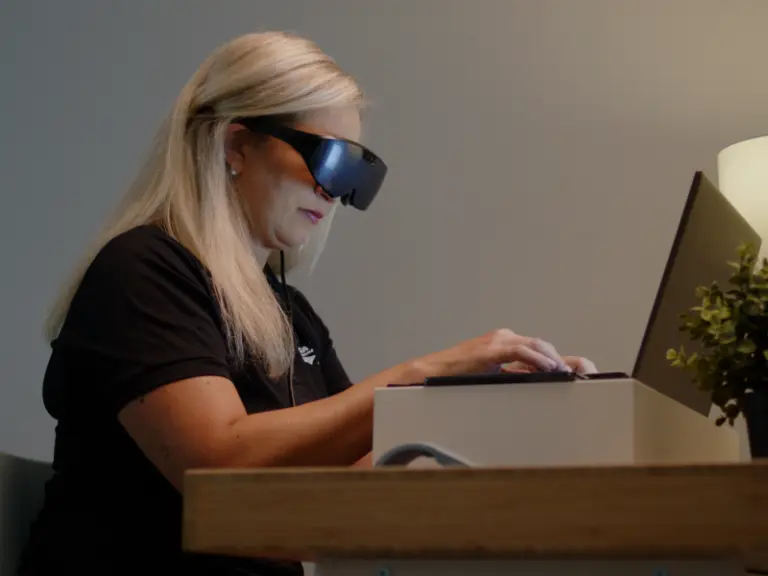
To get back to your life and fully enjoy it, there are supportive devices that enhance the quality of life. These devices use low vision assistive technology that helps people who suffer from vision loss due to optical atrophy.
Some low vision devices that maximize sight are:
IrisVision is a leading low vision assistive technology that helps enhance vision for people with visual impairments and legal blindness. It provides the brain with extra visual information to make up for the gaps created by optic atrophy vision loss using a high-end camera, clever algorithms, and high-definition screens.
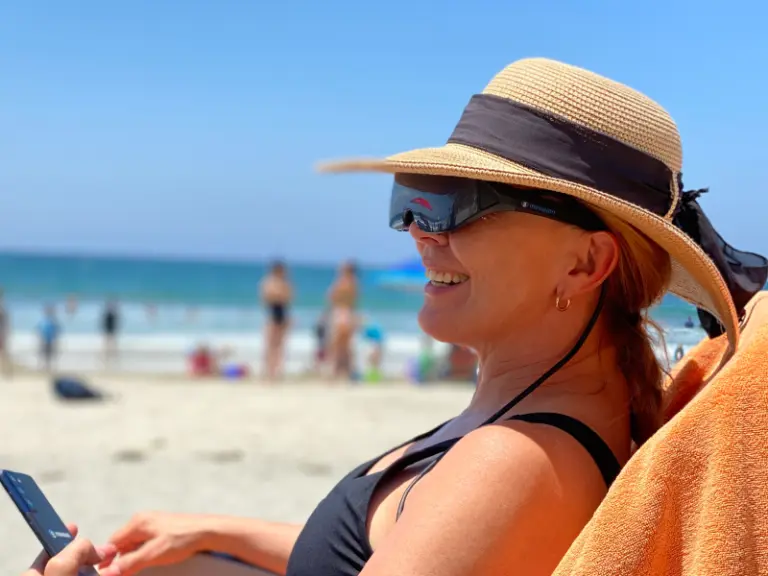
It’s most effective for people suffering from blurry vision, central vision loss, tunnel vision (peripheral vision loss), and more, all prevalent in optic atrophy
There are several benefits of choosing IrisVision for the management of vision loss caused by optic atrophy.
People suffering from optic atrophy due to different diseases may experience mobility issues along with low vision acuity due to nerve damage. These diseases may include Neuromyelitis Optica, Brucellosis, and Multiple Sclerosis. Other causes of decreased mobility include the lack of a full field view caused by vision loss.
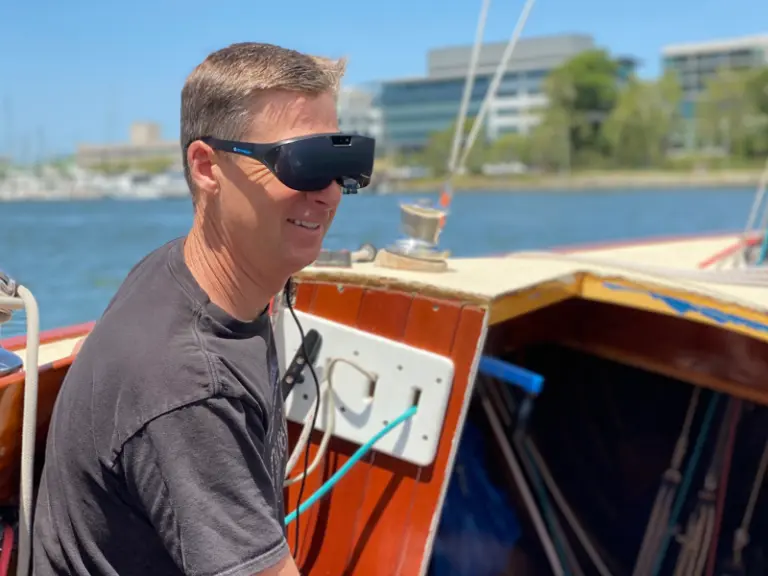
IrisVision Inspire is a head-mounted, lightweight eyewear designed for all-day wearability. It allows people with low vision to detect objects and faces easily, counter the effects of poor night vision, and provides color contrast, increasing mobility. Moreover, people with low vision due to any eye condition experience improved mobility after using low vision assistive devices.
The IrisVision Inspire headset is equipped with an easy-to-use remote control that allows the user to adjust what they see. It enables the user to switch between modes to adjust and compensate for visual acuity, tunnel vision, and so on.
IrisVision coaches are experts who help the users discover various features of the Inspire eyewear. They focus on the individual’s area of interest and assist them throughout the experience of using the low vision assistive device. People with low vision get to experience 100% remote screening, training, and support.
Vision loss shouldn’t limit your ability to enjoy life. IrisVision’s goal is to provide care and assistance that would lead to a life-changing low vision solution that caters to the needs and situations of eye conditions like optical atrophy. Get started with your 30-day evaluation period of IrisVision Inspire to use the leftover vision most effectively.
Support
See and Connect Today!
IrisVision Global, Inc.
5994 W. Las Positas Blvd, Suite 101
Pleasanton, CA 94588
Email: [email protected]
Support: +1 855 207 6665
Support
See and Connect Today!
IrisVision Global, Inc.
5994 W. Las Positas Blvd, Suite 101
Pleasanton, CA 94588
USA Email: [email protected]
Support: +1 855 207 6665
Support
See and Connect Today!
IrisVision Global, Inc.
5994 W. Las Positas Blvd, Suite 101
Pleasanton, CA 94588
Email: [email protected]
Support: +1 855 207 6665